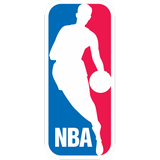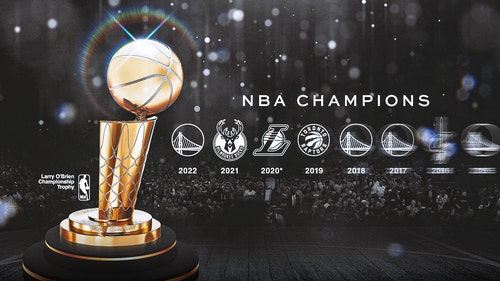
2016-17 player preview: Derrick Williams

Can Derrick Williams grasp his opportunity with the Miami Heat after the unfortunate absence of Chris Bosh?
Mandatory Credit: Brad Penner-USA TODAY Sports
The latest revelations regarding Chris Bosh’s health and future with the Miami Heat have been devastating, albeit inevitable. As a result, the ‘Big 3’ era has come to dramatic end. And with the regular season just over a month away, the Heat need to gather themselves and move forward. With Bosh’s departure, opportunities for other players are going to arise in a number of forms.
One player who stands to greatly benefit from this scenario is Derrick Williams, who signed with the Heat on a one-year, $4.6 million deal this summer.
Now entering his sixth season, the former No. 2 overall pick has found himself in a number of unfortunate situations. He commenced his career at two poorly run franchises, with the Minnesota Timberwolves and the Sacramento Kings.
Last season he played with the New York Knicks. There he experienced a coach being fired mid-season and replaced by an even worse coach. He has had to contend with playing time throughout his five seasons with the likes of Kevin Love, Rudy Gay, Carmelo Anthony and Kristaps Porzingis. To top it off, his coaches have included Kurt Rambis (twice!) and Derek Fisher.
These experiences clearly don’t scream of stability or of terrific leadership. Williams now finds himself playing under first-class ownership, an all-time leading executive in Pat Riley, and a two-time championship coach in Erik Spoelstra. Hopefully a better set of circumstances will provide for better results.
Last season and best performance
Williams played in 80 games in his sole season in New York, which included just nine starts. Overall he averaged 9.3 points per game and 3.7 rebounds per game. He shot 45 percent from the field whilst playing 17.9 minutes per game with a usage rate of 23.3.
Per 36 minutes, these numbers equate to 18.7 points per game and 7.4 rebounds per game. When you take into account the inconsistency of his minutes game-to-game, and the below-average coaching, these numbers are more than respectable.
His best performance last performance came on January 13 against the Brooklyn Nets. Coming off the bench despite the absence of Carmelo Anthony, Williams poured in a season-high 31 points, along with seven rebounds and two steals. He played 32 minutes and shot 11-17 from the floor with a usage rate of 33.1.
As can be seen in the above video, Williams is incredibly athletic and has more than competent ball handling skills for a player of his size. Whilst he hit just the one outside jumper for the game, this is an area that he more than capable of improving and developing with time and confidence.
It’s no coincidence that he matched his career-high in points in a game not featuring Anthony. Whilst his game is not in anyway similar to that of Bosh, the touches and playing time he will see as a result of his absence could ensure a breakout season for Williams.
As Williams himself noted recently, “I’ve had five coaches in two seasons…it’s hard to be consistent when I’ve never really had a consistent head coach”.
Mandatory Credit: Brad Penner-USA TODAY Sports
What Williams does well
As can be seen clearly on the above photo, finishing at the rim is one of Williams’ greatest strengths. Last season per Basketball Reference, 39.3 percent of his total field goals were attempted at the rim. That he made 63.1 percent of these is exceptional.
Despite his inconsistent playing time last season, when given the chance he certainly produced. Over the 29 games where he played at least 20 minutes, Williams contributed 13.7 points per game and 5.8 rebounds per game. He averaged 25.8 minutes per game with a usage rate of 24.1, whilst shooting 45.9 percent from the field.
Williams’ versatility is another attractive component for the Heat moving forward. He is highly adept at creating his own, whether it is driving to the rim or pulling up for a mid-range jumper.
Furthermore, he has demonstrated the ability to contribute within the flow of a teams offence. Last season, 64.2 percent of his made field goals were assisted by a teammate, per NBA.com.
With a new-look, high-octane offence on the cards, this system should play right into the hands of Williams.
Mandatory Credit: Soobum Im-USA TODAY Sports
What Williams doesn’t do well
The first aspect that simply leaps off the page is his jump shot. Per NBA.com, Williams last season hit just 32.8 percent of shots classified as a jump shot. When you consider that these shots made up 57.7 percent of his total attempts, it clearly illustrates a big hole in his offensive game.
Last season, Williams shot 29.3 percent from three-point range. This made up 26.5 percent of his total field goal attempts, therefore representing an area of high volume within his offensive game. Considering Williams is not a prototypical three or four man, the three-point shot is a key component of such a players arsenal.
Yes, his playing time was inconsistent and the coaches he played under were extremely sub-standard. But these numbers could very well illustrate why he has never found a landing spot in the league to date.
And whilst Hassan Whiteside has been labelled as a black-hole on offence, similar sentiments could be attributed to Williams. He has averaged 0.7 assists per game for his career, including 0.9 per game last year. Further, his usage rate last season was 23.3. This is relatively high considering his role with the Knicks last season.
Mandatory Credit: Jeremy Brevard-USA TODAY Sports
The 2016-17 Season
At age 25 and with five seasons and three teams behind him, the time is now for Williams. At six foot eight and 240 pounds, Williams has a skill set which will fit brilliantly with the direction the Heat are heading.
All the noise heading into the season has the them getting out and running. Goran Dragic will have complete control at the point, complimented by athletic players at the guard and wing positions.
Whether Williams starts or comes off the bench, its highly likely he will set a career high for minutes played per game. In his five seasons to date, his highest is 24.6 minutes per game, which came in his second season. The opportunity to establish himself and finally find a home should be motivation enough for Williams.
Having played alongside all-star caliber forwards his whole career, the absence of Bosh creates a real opportunity for Williams.
Like any player trying to make his mark, there are two keys which Williams will hoping comes his way: (1.) Having the backing of the coaching staff will be imperative coming to a new team, in a new system, with new teammates; and (2.) Having the knowledge and peace of mind that his minutes will be there on a regular basis cannot be emphasized enough.
Williams has never been provided an extended stretch of playing time in his five seasons to date. Hence, it could explain the extremely low assist rate and poor outside shooting that his followed him throughout his career. That is, he has been rushing and forcing things due to the uncertainty in his role.
It will be very interesting to see how regular playing time addresses these issues. But with Bosh gone, stretch forward Josh McRoberts perennially injured and Justise Winslow still just 20 years old, this could very well be a career-defining season. And whilst Williams does have some flaws which need addressing, his talent level and the circumstances of the team should ensure some great strides going forward.
More from All U Can Heat
This article originally appeared on









